It is no secret that the large civic parks found in most large cities are great places to go birding, and it Centennial Park in Sydney is no exception. The park is located to the south east of the central business district, part of a larger complex of playing fields, stadiums and golf courses that the very outdoorsy Australians find so important. I popped in for a visit two days after Christmas in order to walk off some of the excesses of the last three days, and get a few good bird while I tried to salvage my health.
The Willie Wagtail (Rhipidura leucophrys) is actually a terrestrial fantail.
I entered from the west and immediately heard Rainbow Lorikeets, fast moving streaks of colour that are very common in Sydney. They are one of the most attractive of Australia’s parrots, and one of the most common, benefiting from the planting of attractive flowering shrubs. Near the entrance lay Bushy Pond, one of the many lakes and ponds that fill the park. The lake was filled with families of Dusky Moorhens and Purple Swamphens (or Pukeko as we call them in New Zealand), all tending small groups of black chicks. Swooping over the lake snatching up small insects were Tree Martins, while on the grass by the lake a pair of Magpie-larks stalked around looking for prey. Magpie-larks are neither magpies nor larks but are the largest of the monarch-flycatchers, and the most terrestrial of the family. Pairs of these a are common sight on open grassy areas in Australia.
The Purple Swamp-hen (Porphyrio porphyrio)
I turned south, walking past large groups of picnickers which were being patrolled by Australian White Ibis, one of the species of ibis also known as the Sacred Ibis. This striking black and white bird is a common sight in the city, even in the central business district, but it is especially common in the park and breeds on the islands in the lakes here. The grassy areas were also patrolled by Laughing Kookaburras, which engaged in the typical watch and wait hunting methods of the kingfisher family, and the engaging Willie Wagtail. This small fantail feeds on and around the ground, bouncing up and flying around like a stunt kite as it chases small insects.
An Australian White Ibis (Threskiornis molucca) that is part of a study of urban birds (tags have been reported!).
The large ponds were home to great numbers of waterbirds of several kinds, many of which, like the ibis, breed on the islands in the lakes. Little Pied Cormorants and Little Black Cormorants were joined by several Australian Darters, whose large buff coloured chicks were easy to pick out in their nests on the trees. I only saw one heron, a Nankeen Night Heron, but would be surprised if there weren’t more. Every pond had plenty of Pacific Black Ducks, a species that is almost extinct in New Zealand due to hybridisation with the introduced Mallard, but is still thankfully common here in Australia. The other common duck species is the Hardhead, a local species of diving duck, but the rarest species (of which I saw only one) is the Musk Duck. This unique and odd Australian endemic is famous for the strange wattle under the bill of the male, but sadly all I saw was a female. Rounding off the waterbirds were Australian Pelicans, Eurasian Coots, the iconic Black Swans and feral geese.
The Duck Pond is the only place where you can feed the birds, and is quite popular with birds and people alike.
A Hardhead or White-eyed Duck (Aythya australis), and a Eurasian Coot (Fulica atra) in the Duck Pond.
Near the large Duck Pond (the only place feeding the birds is allowed) there is a remenant area of swamp filled with paperbark gums, a species of Eucalptus tree, that has been taken over as a roosting site for Grey-headed Flying Foxes. These large fruit bats are something of a problem for the staff of the Sydeny Botanical Garden, whee they also roost and damage some of the trees, but they seem to be doing fine here.
I did manage to dip on my two taget species, Lantham’s Snipe, which winters in the park after migrating from Japan and Asia, and the Black-fronted Dotterel, which breeds in the park. I suspect that I simply didn’t find the right places to look for them, as the park is huge and I didn’t even see half of it. Still, that is nothing more than an excuse to come back some day!









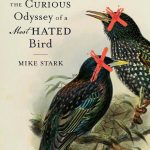
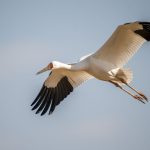

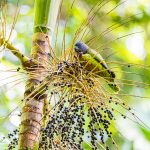
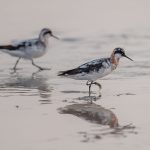
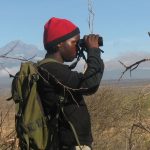
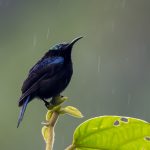
What a great collection! My Fav is that Willie Wagtail, I just love Waggies 🙂
Hi guys,
Thanks for the blog post. Great pics here in the Park.
For your interest, we have Ern Hoskins bird list in Centennial Park posted on our website here: http://www.centennialparklands.com.au/activities/bird_watching (scroll down to the bottom).
We also have our next Birdwatcher’s Breakfast coming up on 5 Feb: http://www.centennialparklands.com.au/activities/whats_on/talk_and_tours/birdwatching
Finally, not all photos are of birds, but many are. This is a link to our recent park visitors photo comp: http://www.flickr.com//photos/centennialparklands/sets/72157628815994485/show/
Regards,
Craig @ the Park.